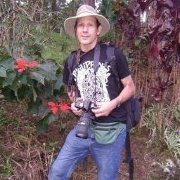Digital body to carry "vintage" lenses, which one?
-
Recently Browsing 0 members
- No registered users viewing this page.
-
Topics
-
-
Popular Contributors
-
-
Latest posts...
-
1
Photography Forum?
We've had one for years thanks......its right here..... https://aseannow.com/forum/21-thailand-photography-and-video-forum/ -
183
Middle East Gaza: We are dying slowly, save us !
Purely out of interest, what drives your almost fanatical support. Are you a muslim ? do you have palestinian roots, is it from anti jewish sentiment ? Or just from your personal moral compass of right and wrong, I'm not looking for an argument and I promise not to reply, just genuinely curious Personally I remain relatively ambivalent about it all, rightly or wrongly for me and many others out of sight out of mind , and I just don't have the time or the inclination to get all worked up about all the injustices in the world in truth nobody does. We don't hear about ukraine much anymore or Sudan or Darfur or North korea , those disasters are just not "fashionable" at the moment, why is that ? I reckon they have been pushed aside by the media, because that is run predominantly by lefty types who do indeed have a some deep rooted hatred of the Jews I honestly don't know why, and if the truth be known neither do many of those in the chanting mobs, When asked "which river and which sea" many have no idea where or indeed what it actually means Now no lefty protest about immigration or anti -fascism in my country is complete nowadays without some palestinian flag waving and anti semitic sentiment, but non of our illegals are from gaza I am not ashamed to say I don't particularly like muslims they have caused a lot of trouble in my country over the years, I know they are not all bad but the so called moderate or good ones are never too quick to condemn the others. In the same way that not everybody is a reckless driver after a couple of pints the fact that some actually are means that for the good of society the limit is set low . This should apply to the followers of the so called religion of peace by letting them continue to practice but strictly in private and limiting there numbers and any influence they have in society....Just saying people cam thumbs down me as much as they wish , water off a ducks back , so why waste your time ladies love from the prang xxxxx -
29
Report Danish Zoo Faces Backlash for Using Pets as Predator Feed
The terms you used to describe me were very insulting and taken personally. I called out a completely anonomous poster for his pathetic lack of abiity to express an opinion in words. I wasn't upset and my growth stage had nothing to do with my action. :Thou doth protest too much, methinks" -
129
What happened to Rock n Roll
Just musicians talking about life. What they or others they know experienced, things that happen in life that are good and bad, hopes, dreams and reality. Music is there to enjoy, vent and express. Lynyrd Skynyrd have many excellent songs about life. Life is good, bad and everything in between. Music expresses that in songs............. -
6
Crime Transgender Thief Nabbed After Robbing Drunk Russian Tourist
What? This is not shocking! It´s just ladyboy m.o. -
179
U.K. EV values fall off a cliff
Sorry to disappoint you but nobody gives a damn what you drive. You never see EV owners on pickup truck discussions pleading for everyone to switch to EVs, but any discussion that mentions EVs brings out the EV hating snowflakes who keep crying "EVs are a con"
-
-
Popular in The Pub









Recommended Posts
Create an account or sign in to comment
You need to be a member in order to leave a comment
Create an account
Sign up for a new account in our community. It's easy!
Register a new accountSign in
Already have an account? Sign in here.
Sign In Now